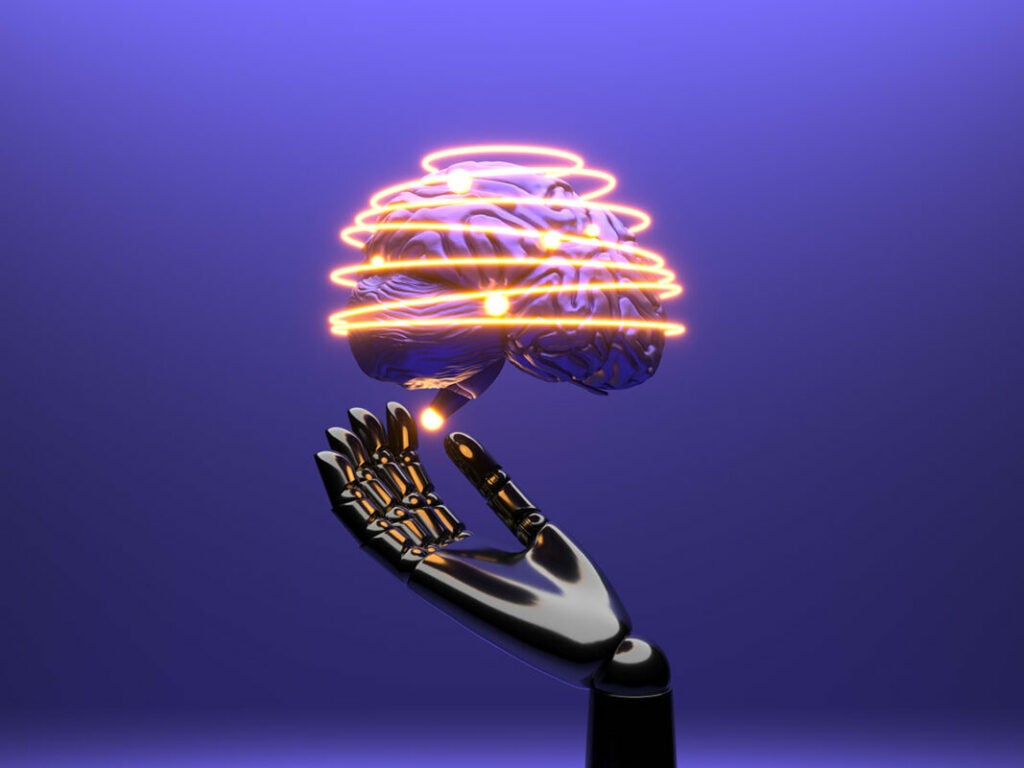Article
Chat GPT: What is it, How to Use it, and all About AI

- December 29, 2022
- Updated: July 2, 2025 at 3:13 AM

You might’ve read about ChatGPT recently, and how it threatens to destroy all we hold dear and sacred about our civilization. Well, maybe not to that extent, but it’s surely making waves on the Internet, thanks to its impressive features.
But in case ChatGPT doesn’t ring a bell, here’s a quick overview: It’s a chatbot that interacts conversationally with you. You’d be pardoned if you wonder what’s all the fuss about. After all, isn’t it the same as those infuriating chatbots which supposedly help you when you have an issue with your mobile provider or other services?
As it turns out, ChatGPT is a very special chatbot, and that’s just the beginning: it can also write software, poems, songs, and short stories.
Incredible feats by ChatGPT
The power of ChatGPT relies on its amazing, human-like responses. Not only that, but since it also possesses an incredible amount of data, it’s able to cross-reference things, extrapolating data to create new outcomes.
In a striking example, a user shared the software code they wrote with this chatbot and asked what was wrong. The bot responded very naturally, explaining it didn’t know what the problem was, and asked if it could have more context. When the user couldn’t provide more context, ChatGPT pointed out some potential issues with the code in a natural way.
And perhaps the best is an example from ChatGPT’s main website. A user asked the bot about Fermat’s Little Theorem. After the explanation, the user asked how it was used in cryptography, with its corresponding response. Now comes the best: the user asked the bot to write a limerick about it, and summarize the conversation, which ChatGPT did, flawlessly.
The list goes on and on, but the main concept is, it goes far beyond simple answers. It can also seemingly develop its own thoughts, and solve problems.
You can also try it for free by simply going to ChatGPT’s website and opening an account. Then, in a simple interface, you just write what you want the bot to do, such as “explain the differences between Star Wars and Star Trek”, or “write an essay about mud”.

What’s behind ChatGPT?
ChatGPT has a complex design under the hood, but there’s no techno-magic involved. It all comes to Machine Learning (ML). In software powered by Machine Learning algorithms, humans “train” the software by giving it large amounts of data, and then teaching the software about the right answers.
There are different techniques to do this, but suffice it to say it involves the software “learning” from its mistakes and fine-tuning itself until it gives precise information. In the case of ChatGPT, human trainers provided both sides of the conversation, and after more steps, it was transformed into a dialogue-type format.
But how does it know which one’s the more human-like answer? It was trained using a rewards model, that is, humans fed it with responses ranked by quality. It allows the bot to “understand” what’s the best way to articulate an answer.

Are we in the future?
It all sounds fantastic, and it’s really impressive. You might wonder what comes next: walking robots among us or flying cars. However, ChatGPT isn’t without its issues, and some of these come from design.
One of the major issues is that it can sometimes give completely false but very articulate answers. This is a difficult problem to solve since there’s no source of truth during its training. If they program the bot to be more careful, it declines questions that it’s able to answer.
Another problem is inappropriate requests. Even though they have programmed it to refuse them, it sometimes doesn’t. There were some issues when it was released, where the developers decided to “ban” certain themes and topics. It can also sometimes make biased answers.
As you can see, there are still lots of things to polish. The problem is that some of these issues are inherent, so it’s anyone’s guess whether they can be fixed. Even though this model is impressive, it’s still nowhere as near as a human in terms of adaptability.
About AI and Machine Learning
There are a lot of ideas circulating about AI, including whether it’s a dangerous technology that will dominate us. Let’s take a look at what AI is, and in which state we currently are.
AI, or Artificial Intelligence, means that a machine has the capacity for autonomous thought. Your toaster, for instance, can do something: it can toast your bread. However, you “command” it on how to do it, specifically: you turn it on, put the bread in, set the toasting level, and then it does it.
AI-powered software and devices don’t work that way. They have the capacity of analyzing the situation and adapting to the circumstances to perform their job. A good example of this is robot vacuum cleaners. They can sense obstacles, and avoid them. They even know how to go back to their charging station.
These abilities make people wonder if devices can suddenly go crazy and kill everyone, or install themselves as our overlords. Thankfully, this is far away from us, and some of the fear comes from a misunderstanding in terminology. AI’s ubiquity also means anything can be a suspect of AI manipulation.
There are many types of AI, and the definitions are constantly changing. To make it less confusing, AI can be cataloged based on its functionalities, including terms like Reactive Machines, Limited Memory, Theory of Mind, and the dreaded Self-aware AI.
But it can also be categorized based on how they work, and that’s when Machine Learning, Deep Learning, NLP, Robotics, and other terms show up. So, an AI model can be a Reactive Machine and Deep Learning at the same time.
However, the main term you need to worry about is General Artificial Intelligence, which is also called Self-Aware AI. This is a theoretical concept still, in which a machine can become self-aware and have consciousness and emotions. There is currently no software or device that has this ability, at least that we know of.
The problem with this is that nobody really knows how consciousness works in the first place, much less how to create it or make it happen. Even if they did, there are many ethical issues, such as it having rights, and if it’s a valid goal to pursue.

ChatGPT, yes; General AI, no
Summing up, ChatGPT is a valid tool that’ll probably be enhanced to a point where it will be indistinguishable from a human, but it’s still not there. Software developers will still need to code and writers to write.
But the big question is what comes next. Will AI be able to replace humans in language-related tasks, too? And if it does, will it go after everything else? Will we live in a jobless utopia where only machines work or a dystopian nightmare with sentient-like devices enslaving us? Nobody knows, but just in case, don’t forget how to remove batteries.
Latest from Shaun M Jooste
You may also like
 News
NewsThe most interesting indie of the year puts us in the shoes of a crystal demon who skateboards
Read more
 News
NewsAccording to the author of Percy Jackson, the series is more faithful to his books than the movies
Read more
 News
NewsMike Tyson took almost 30 years to discover that an iconic video game character was inspired by him
Read more
 News
NewsWarner Bros. is strongly opposed to Paramount's hostile takeover bid
Read more
 News
NewsCon 26 años a sus espaldas, esta franquicia de juegos de estrategia y RPG anuncia la fecha de lanzamiento de su nueva entrega
Read more
 News
NewsWhat is Fantastic Frontiers? The new trend that Adobe Firefly helps you create effortlessly
Read more